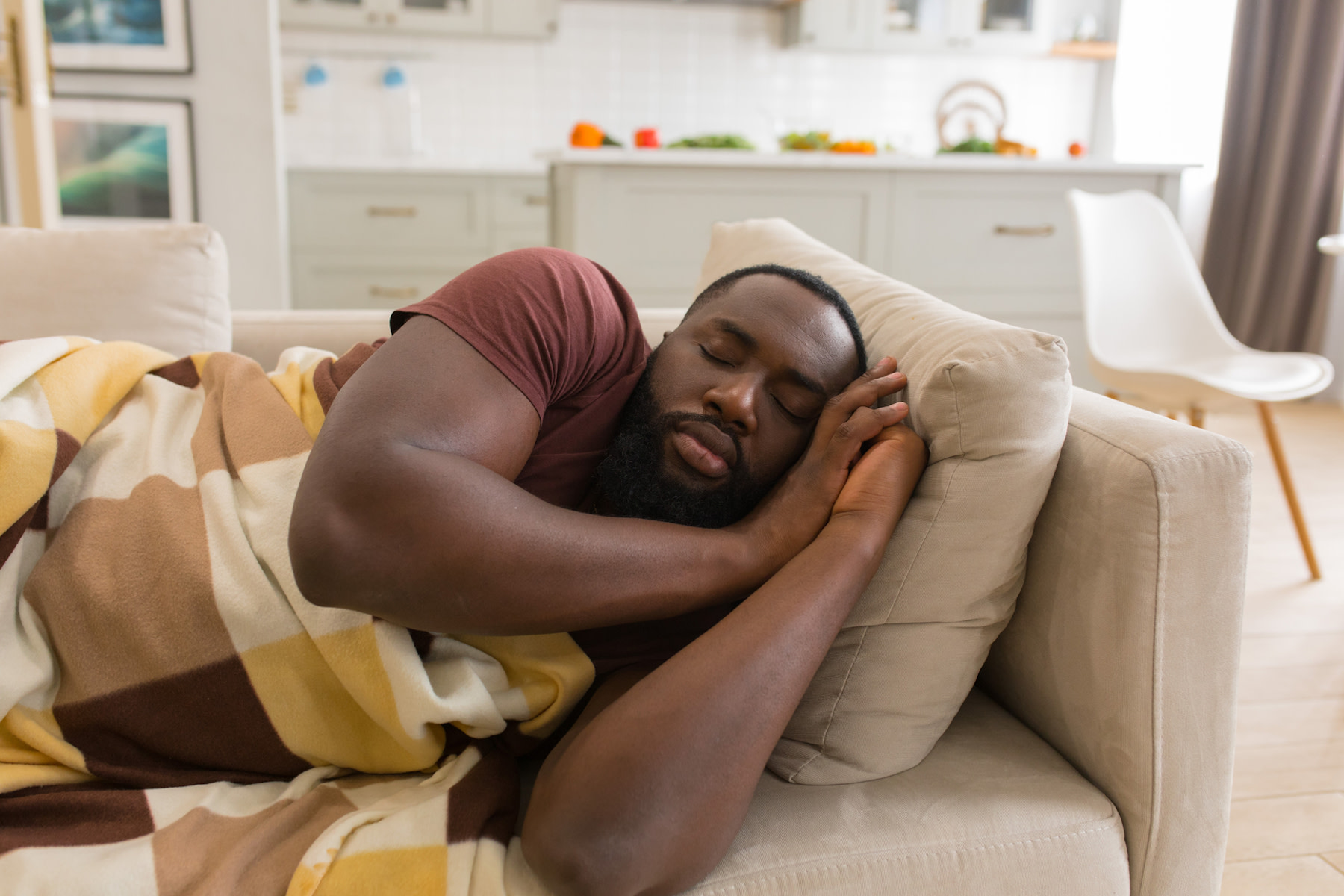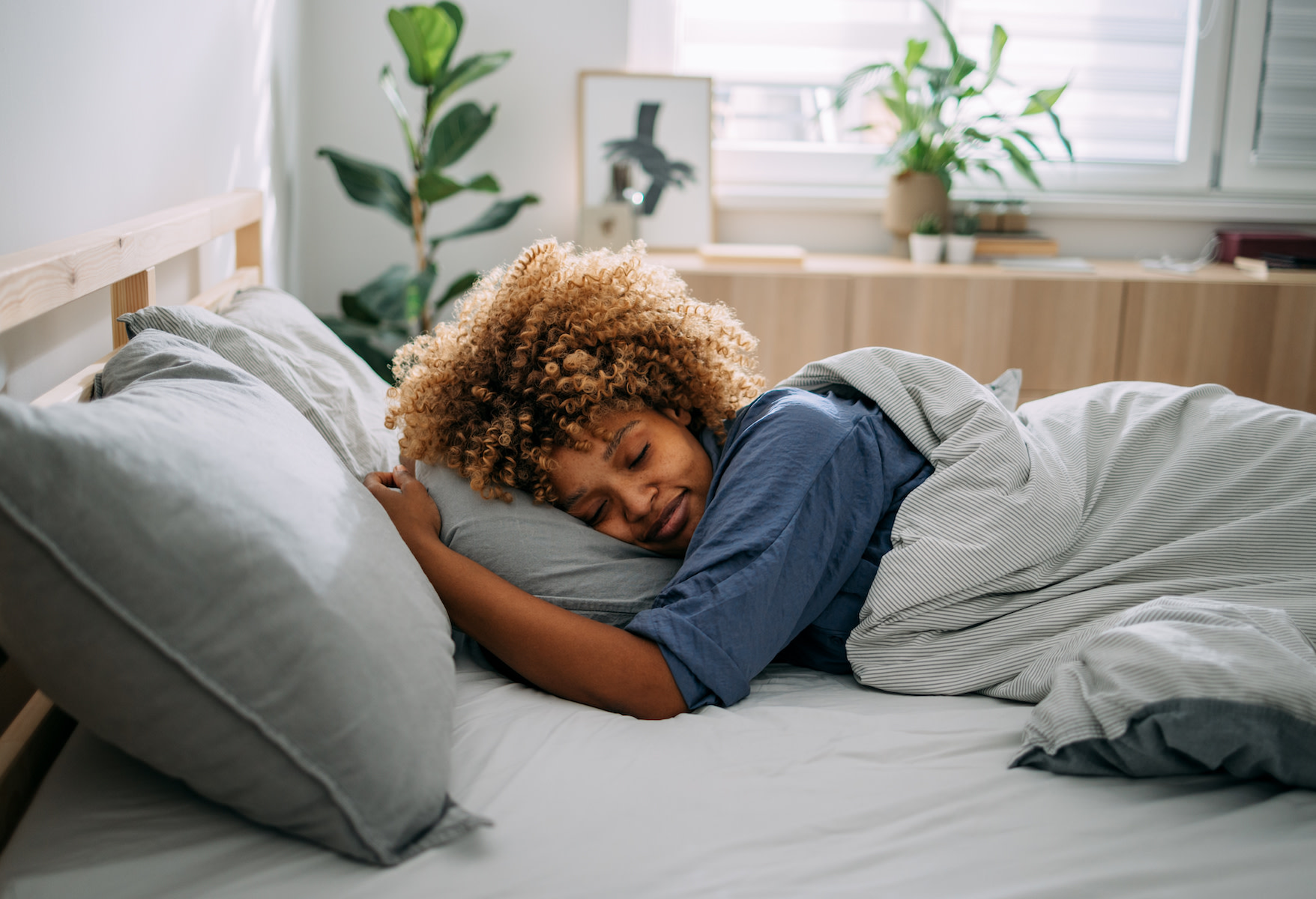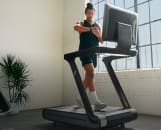
© Demetr White / Stocksy United
How Long Are Power Naps—and Are They Effective? Here’s What 4 Sleep Experts Say
Power napping can be surprisingly powerful every now and then, but it shouldn’t be something you rely on daily. Learn why—and find tips for taking one when you need it.
By Michelle Konstantinovsky, Sarah Klein•
What Is a Power Nap?
How Long Is a Power Nap?
Do Power Naps Work?
How to Take a Power Nap
Who Should Take Power Naps?
Should You Take Power Naps Daily?
Potential Drawbacks of Napping
When to Talk to a Healthcare Provider About Your Sleep
The Takeaway
Let’s be honest: There are plenty of healthy habits we know we’d be better off adopting, but they can’t all make the cut every single day. It can be tough enough finding time to incorporate regular exercise, eat healthy foods, and keep our mental health routines on track—all while balancing life’s many other demands. Sometimes you simply don’t have the bandwidth to check off all the good-for-you to-dos on your list, and many times, the thing that falls by the wayside is getting sufficient, quality sleep.
In an ideal world, we’d all be getting that sweet, expert-recommended 7–9 hours of shut-eye a night. In reality, many of us are falling short for a million different reasons (see: stress, a snoring partner, a crying baby, or an accidental social media marathon). While we should all continue to strive for optimal rest every night, sometimes we simply can’t get the Zzzs we need.
So, in the absence of a good night’s sleep, can a “power nap” really power you through the day? We asked the pros, and it turns out, a power nap can be surprisingly effective in a pinch.
What Is a Power Nap?
While a “nap” refers to some amount of sleep outside of regular sleep hours, a “power nap” is a specific snooze strategy that’s similar to a siesta: a nap that’s short and sweet with the ultimate objective being boosted energy.
“A power nap is taken during the day, typically lasting anywhere from 10–20 minutes,” says Funke Afolabi-Brown, MD, a triple-board-certified sleep medicine physician and founder of Restful Sleep MD. “The primary goal of a power nap is to provide a quick burst of rest and rejuvenation without entering into the deeper stages of sleep.”
Ultimately, a power nap (a term coined by psychology professor James Maas) is an intentional, dedicated effort to cram some solid rest into a set amount of time without going overboard.
Power Naps and Sleep Stages
To understand how and why power naps can be so effective, it helps to have some basic information about the sleep stages. There are two major phases: rapid eye movement (REM) and non-rapid eye movement (NREM) sleep. That second phase is divided into a few stages of its own: stage 1, stage 2, and stage 3. Every night (if you can get the ideal 7–9 hours of sleep), your body typically cycles through the three NREM stages and back to REM anywhere from four to six times, averaging about 90 minutes per cycle.
“When you fall asleep, you first go through the light stage 1 sleep, the regular stage 2 sleep, and then land in the deep stage 3 sleep—you stay there a while until you emerge again into light sleep (and usually a REM period),” explains Michael A. Grandner, PhD, an associate professor of psychiatry at the University of Arizona College of Medicine and director of the university’s Sleep and Health Research Program.
“A power nap could be described as falling asleep and waking up before you hit the deep stage 3 sleep,” he says. “The amount of time that entails will vary from person to person (some people drop into stage 3 faster), time of day (you get there faster the later in the day it is), and how much sleep you got the night before (you drop into it faster if you’re sleep deprived).”

miniseries / iStock / Getty Images Plus via Getty Images
How Long Is a Power Nap?
The ideal length of a power nap can differ from person to person, but generally, experts say it should be no longer than 30 minutes. The idea is to get the most out of your power nap without overdoing it; too little rest, and you won’t feel much better when you get back up, and too much can actually backfire.
That’s because “longer naps increase the chance of getting into deeper stages of sleep, which will lead to sleep inertia, a feeling of grogginess as we wake out of deep sleep,” Dr. Brown explains. On the other hand, you won’t get much benefit from a power nap that’s too short, either, says W. Chris Winter, MD, a neurologist, sleep specialist, and host of the Sleep Unplugged podcast. “I don’t think there is much consequence to a nap that is too short—like a snack consisting of one Goldfish cracker,” he says. “No problem, but did it really help or do anything?”
Grandner reiterates the optimal power nap length depends on waking up before hitting that deep stage 3 sleep. “This is usually 20–30 minutes, especially if you are napping closer to the middle of the day,” he says. “If it is later in the day, even this can be too long. If it goes too long, then you will wake up from stage 3 sleep and feel terrible. The brain really does not like to wake up from stage 3 sleep.”
Do Power Naps Work?
If used occasionally and with purpose, power naps are effective and can provide some serious perks. “Power naps can offer several potential benefits for overall health, workout performance, focus, and productivity,” Dr. Brown says. “They can also help with reducing stress, improving your mood, creativity, and problem-solving skills.”
Yes, you read that correctly: In addition to boosting your mood and mental clarity, a power nap can help take your workout to the next level and potentially get you closer to that PR you’ve been chasing. While 20–30 minutes is generally the ideal length for a power nap, some research suggests that a little bit of extra time under the covers might be beneficial for some athletes. According to a 2023 systematic review and meta-analysis in the British Journal of Sports Medicine, a daytime nap that lasts between 30 and 60 minutes can improve cognitive and physical performance and reduce perceived fatigue among male athletes, particularly when participants were given at least an hour between waking up from their nap and exercising.
“There is extensive data showing that power naps can boost mental and physical performance,” Grandner says. “They help with learning, metabolism, memory, and also increase speed, strength, and reaction time.”
And from a higher-level view, getting more rest is usually helpful. “Sleep in general is good,” Dr. Winter says. “So adding to the amount we are getting is typically beneficial in the long run—particularly when naps are consistent in terms of timing and duration.”
How to Take a Power Nap
The key to getting the most out of your power nap is to get the setting, timing, and duration just right. Here are a few power nap tips to keep in mind:
Keep it short. Set an alarm and be careful not to get comfortable for too long, which could result in sleep inertia. As mentioned earlier, sleep inertia can leave feeling groggy and disoriented, rather than energized and refreshed. “Ideally, you want to keep the nap short,” Dr. Brown says.
Schedule accordingly. “Pay attention to timing and avoid taking a nap that is too late in the day,” Dr. Brown says. “You can aim for mid-afternoon between 1 and 2 PM, which is when most people feel a natural dip in their alertness.” It’s best not to nap after 3 PM, as it could mess with your nighttime sleep.
Try sipping some coffee or tea before you get settled. Before lying down to snooze, consider having some pre-nap caffeine to offset grogginess, recommends Cathy Goldstein, MD, clinical professor of neurology at the University of Michigan Sleep Disorders Center.
Set the scene. Just like you want your bedroom to be conducive to sleeping through the night, you want to find the ideal location for a power nap too. That means finding a quiet, dark, cool place to snooze with minimal distractions and screens. “Find a quiet place free of disturbance and interruption,” Dr. Brown says.
Plan a post-nap activity. Dr. Winter recommends ending your naps at the same consistent time. “After a nap, seek light and movement to help shake off the effects,” he advises.
Don’t fight your body’s natural cues. “If you naturally wake up before the alarm goes off, just terminate the nap because it’s a natural breaking point,” Grandner says.
Who Should Take Power Naps?
Anyone can take a power nap, but ideally, they’re used sparingly when you’re short on shut-eye. “An adult who is getting enough sleep at night without a sleep/health disorder should not need a nap,” Dr. Goldstein says. “However, alertness and performance can be improved by napping in individuals who are not getting enough sleep.”
For example, if you were up later than usual working, studying, or watching an entire season of your favorite show (oops), a midday nap can help you get back on track and give you the energy to complete your tasks for the day.
“[Napping] is a great tool for some, but a real problem for others,” Dr. Winter says. “Napping is for efficient sleepers who need a little more sleep time. If it took you 2 hours to fall asleep last night, you are not an efficient sleeper—no nap for you. If your flight was delayed and you would have been home sleeping were you not in the airport lounge waiting—nap away.”
Should You Take Power Naps Daily?
Power naps shouldn’t be an everyday necessity for most healthy adults. To put it simply: Anyone who has a rough night of sleep once in a while can benefit from a power nap, but anyone who depends on daily napping may want to seek medical advice.
If you find yourself relying on power naps most days, it’s time to talk to a professional: There is evidence to suggest that too much consistent, long-duration napping could be linked to a higher risk of cardiovascular disease, and excessive daytime sleepiness could indicate an underlying health condition.
Potential Drawbacks of Napping
Aside from the potential cardiovascular risks of napping for too long, too often, napping may pose a problem for people with existing sleep issues. “For [people with] insomnia, napping can often worsen the problem,” Dr. Winter says. “It’s like a snack before dinner. A nap should supplement sleep, not replace sleep. If it takes you hours to fall asleep at night, and that bothers you, this might not be a good strategy for helping your body fall asleep faster. Napping might be prolonging the problem.”
Timing can also make or break the potential payoff of a power nap. “Napping too long or too close to bedtime can lead to disrupted nighttime sleep and decreased total sleep time because you have an overall decrease in your sleep drive,” Dr. Brown explains. “While naps are beneficial overall, it’s important to focus on prioritizing your nighttime sleep and optimizing the quality.”
When to Talk to a Healthcare Provider About Your Sleep
Again, you shouldn’t need a power nap every day “If you feel you are dependent on naps, it's time to seek professional help to rule out an underlying sleep disorder,” Dr. Brown says.
It’s also a good idea to talk to a healthcare provider if you experience any of the following sleep-related symptoms:
Feeling like you could use a nap more frequently than usual
Excessive sleepiness during the day
Regularly having trouble falling and staying asleep
Frequent, loud snoring, which could be a sign of sleep apnea, according to the National Sleep Foundation
Difficulty falling back to sleep after waking up during the night
Suddenly falling asleep, even during activity
The Takeaway
Generally speaking, occasional, intentional, well-planned power naps can turn a sleepy, slow morning into a productive, energized afternoon in a matter of 20–30 minutes. While it’s important to consider the root cause of needing a power nap (for example, an infrequent all-nighter versus a case of chronic insomnia), squeezing in a well-timed snooze can make a big difference in mental clarity, mood, and exercise performance.

Peloton App
Access thousands of classes with no equipment needed.
This content is for informational and educational purposes only and does not constitute individualized advice. It is not intended to replace professional medical evaluation, diagnosis, or treatment. Seek the advice of your physician for questions you may have regarding your health or a medical condition. If you are having a medical emergency, call your physician or 911 immediately.
Level up your inbox.
Subscribe for a weekly dose of fitness, plus the latest promos, launches, and events.
By providing your email address, you agree to receive marketing communications from Peloton.
For more about how we use your information, see our Privacy Policy.






